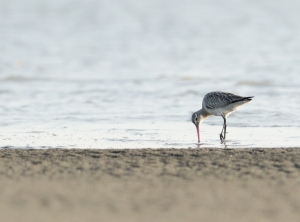Working together to build MPAs for long-term marine resources management
3rd May 2017
Establishing Marine Protected Areas (MPAs) around biologically diverse hotspots is one approach to protecting these vital ecosystems as they come increasingly under threat. When the boundaries of protected areas are delineated through stakeholder consultation and consensus, encroachment becomes less likely and enforcement becomes more effective. When local communities are involved in the governance and protection of their ecosystems, much of the pressure on both nature and governments can be relieved.
MFF started as a disaster response programme working in the six countries most affected by the devastating 2004 Indian Ocean Tsunami, and has now evolved into a strategic programme building resilience in ecosystem dependent coastal communities in 11 member countries. Recognising the importance of protecting biologically diverse hotspots, MFF is assisting member countries in establishing MPAs, including Locally-Managed Marine Areas (LMMAs).

Although all member countries are at different stages in developing their conservation systems and therefore have varying requirements, the need to improve management effectiveness is fairly consistent across the board. The programme believes it is a pressing necessity to improve climate change resilience and protect buffer zones, effectively manage ecotourism, identify sustainable financing mechanisms and, in order to ensure that the results will be equitable and sustainable, to accomplish these goals using a participatory management approach.
MFF is currently supporting Viet Nam’s Cu Lao Cham Island, an MPA nested within the UNESCO Biosphere Reserve, to improve its management effectiveness. Since the island was declared an MPA in 2005, the site has become a popular tourist destination and local livelihoods have become highly diversified. Land value has also increased with the growth of investor interest, all of which is putting pressure on coastal resources and social relations within local communities. To further strengthen the MPA’s resilience, IUCN, MFF and Darren Cameron from the Great Barrier Reef (GBR) facilitated an exercise at the end of April to examine the current successes of the MPA and develop a road map for revising the MPA, which will be implemented over the next two years.
In Myanmar, MFF collaborated with Fauna and Flora International (FFI) to bring stakeholders from Pyinbugyi Village Tract to visit an LMMA in the villages of Done Pale Aw and Lin Lun. This allowed local marine area managers to exchange best practices, providing the visitors from Pyinbugyi Village with ideas on how they can establish their own LMMA.

Over in South Asia, in Bangladesh, MFF is helping to identify the root cause of conflict and engage local communities in the stewardship of their resources. Nijhum Dwip – a park that acts as an important breeding ground for the hilsa and is home to the Critically Endangered spoon-billed sandpiper – is losing tree canopy as a result of its borders being hotly contested. Believing that local communities are the key to cooling the conflict and ensuring the resilience of wildlife, park and people, MFF is evaluating the park using the MFF Resilience Analysis Platform (RAP). RAP provides evaluators with a framework to pinpoint what is weakening resilience of social and ecological systems – border conflict, for instance – so that these gaps can be filled and both systems thereby fundamentally strengthened.
MFF is also working closely with WWF and the Pakistan Ministry of Climate Change to establish Churna Island, Miani Hor and Astola Island as MPAs. At the IUCN World Conservation Congress last September, a motion was adopted to declare Astola Island an MPA. Since then, MFF Pakistan has conducted feasibility assessments of Churna Island and Miani Hor and, in collaboration with the Pakistan Navy, organised a field visit for working group members to Astola Island to undertake a situational analysis. The next steps, to be undertaken by IUCN and MFF, will be to ensure that local communities and grassroots stakeholders are included in the governance and decision-making processes – particularly on Astola Island, which is shaping up to be the first MPA in Pakistan.
Decision-makers at community, civil society and government levels, motivated to safeguard the livelihoods of present and future generations, have recognized the usefulness of tools provided by MFF, and are using them to achieve their aims. MFF looks forward to providing continued support in the establishment of MPAs and LMMAs for effective management of marine resources and protection of rights of local communities.
Update: Astola Island has been officially declared a Marine Protected Area, 15 June 2017.

Bar-tailed Godwit in the Nijhum Dwip National Park, Banglade ... , Bangladesh © Muntasir Akash